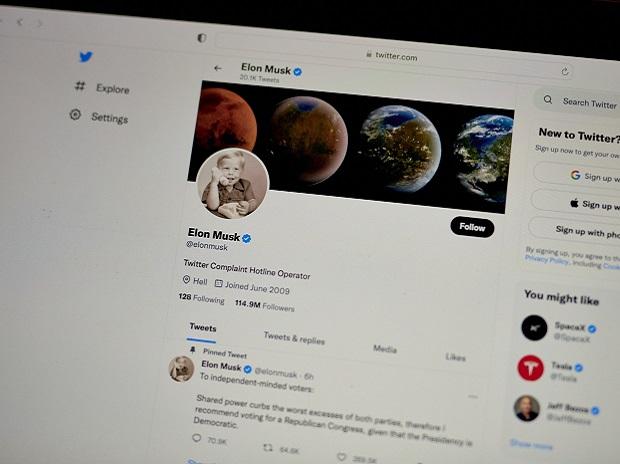[ad_1]
Twitter Inc.’s trust and safety team, which earlier this week had been focused on the US midterm election, quickly shifted its attention to deal with a problem of its own making: a host of users impersonating major brands and celebrities, according to people familiar with the matter.
New leader Elon Musk, who purchased the company two weeks ago for $44 billion, updated the premium version of the product in a way that awards paying subscribers with blue check marks — the same ones that governments, celebrities and businesses get on the site for free to confirm their identities. Once the option was available, users started creating accounts pretending to be major brands and politicians, fooling users and potentially jeopardizing Twitter’s now-shaky reputation with top advertisers.
An account impersonating Nintendo Co., for example, tweeted an image of the Super Mario character holding up a middle finger. One posing as the pharmaceutical brand Eli Lilly & Co. tweeted that insulin was now free. “We apologize to those who have been served a misleading message from a fake Lilly account,” the official account tweeted.
Twitter’s trust and safety team changed focus to Twitter Blue from the US midterms after Musk said that they should prioritize it, said the person, who declined to be named discussing non-public matters.
“Over the next few days, the absolute top priority is finding and suspending any verified bots/trolls/spam,” Musk wrote in an email to staff Wednesday night viewed by Bloomberg.
Twitter’s trust and safety team spent Thursday morning focusing on the most high-profile of the instances, but after a spate of layoffs could only deal with impersonators of the highest profile accounts, the person said. The team had no bandwidth to deal with fraud related to legacy verified accounts, such as those for journalists, with smaller followings, they said.
Later on Thursday, Yoel Roth, the company’s head of trust and safety, resigned, according to people familiar with the matter. Roth was one of the most visible executives gaining power under Musk, as he took to Twitter to explain the company’s shifting policies.
A member of the trust and safety team at Twitter said the unit’s future was unknown, and that Roth had been acting as an advocate and a shield for the group — and had seemingly been in Musk’s good graces. Roth’s former direct reports met to discuss the blue check mark problem shortly after Musk made his first address to employees, telling them that bankruptcy was possible if the company doesn’t start generating more cash, the people said.
Previously, the company had granted verification to people that it deemed to be high-profile and at risk of impersonation, such as politicians, celebrities or journalists.
One account with a blue tick appeared to show former US president George W. Bush tweeting an offensive message according to screenshots circulating online. The images showed another false account claiming to be former British prime minister Tony Blair retweeting the post. Both had been deleted by the time of writing.
More confusion arose after the company appended gray check marks to accounts that had been verified under the old rules, then removed when Musk changed his mind.
The legacy check marks will be removed in “coming months,” said Musk in a tweet Thursday, unless people pay for an $8 a month Twitter Blue subscription. He said too many “corrupt” verification marks exist right now, and there was no choice but to phase out the old checks.
[ad_2]
Source link



